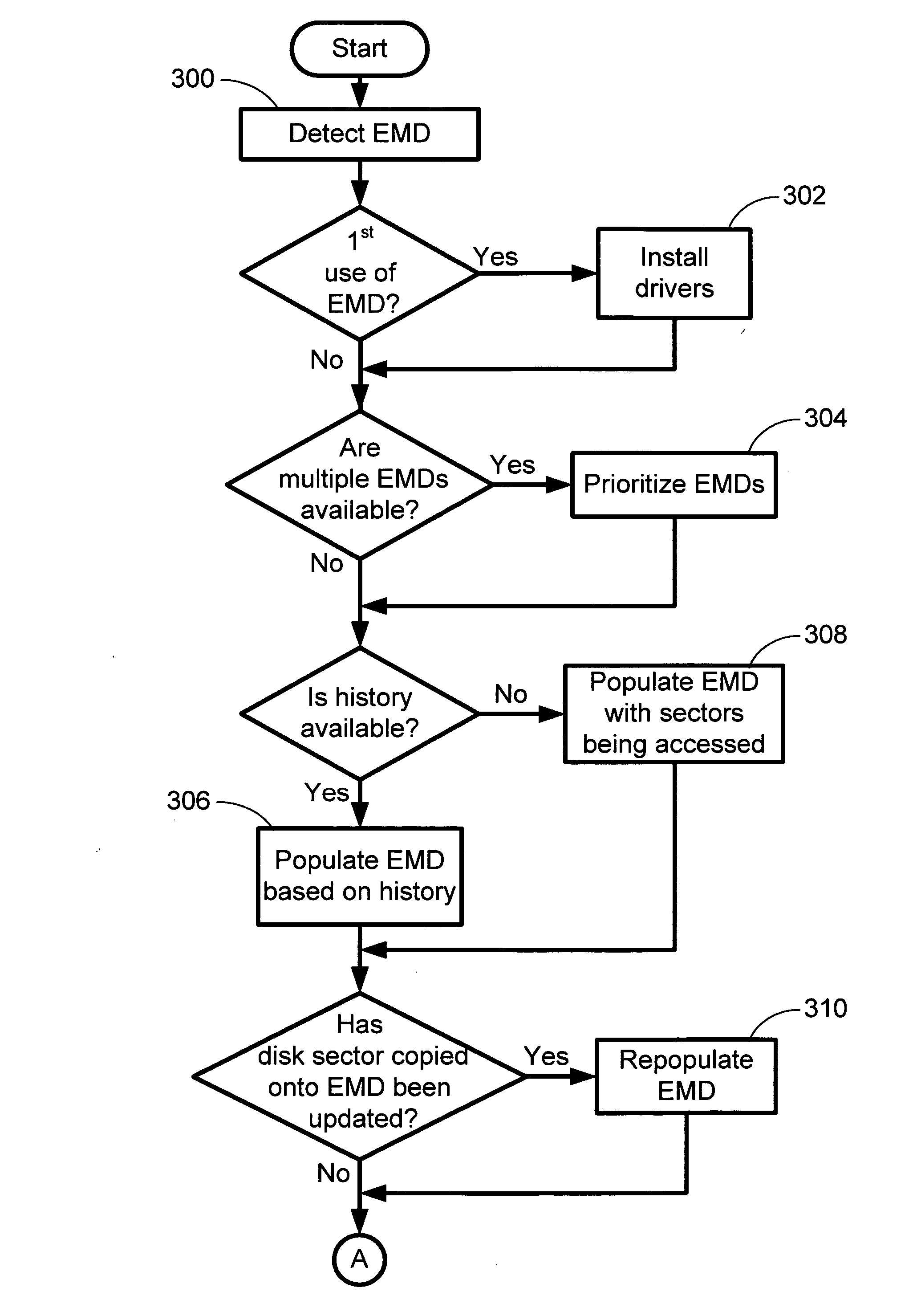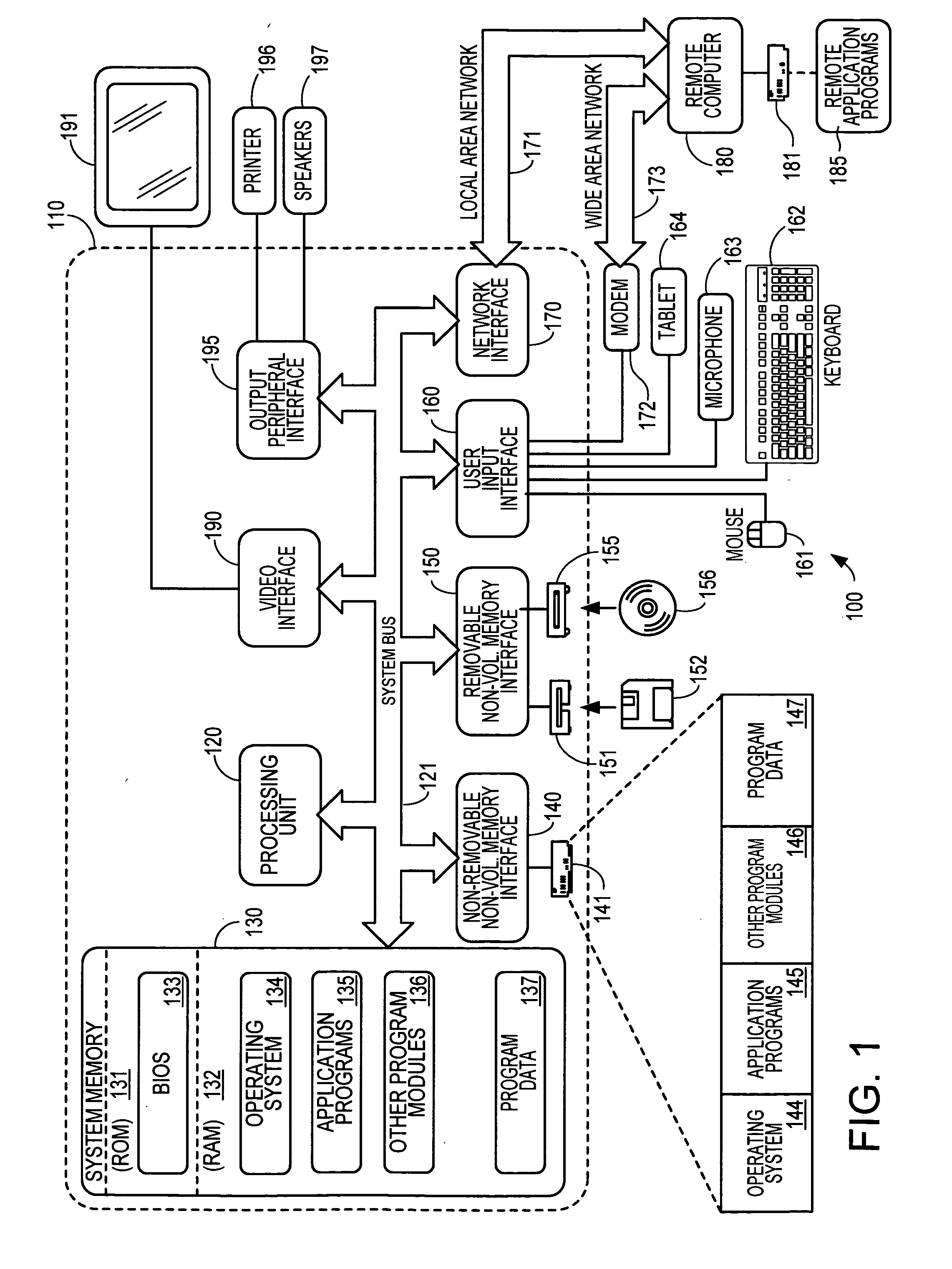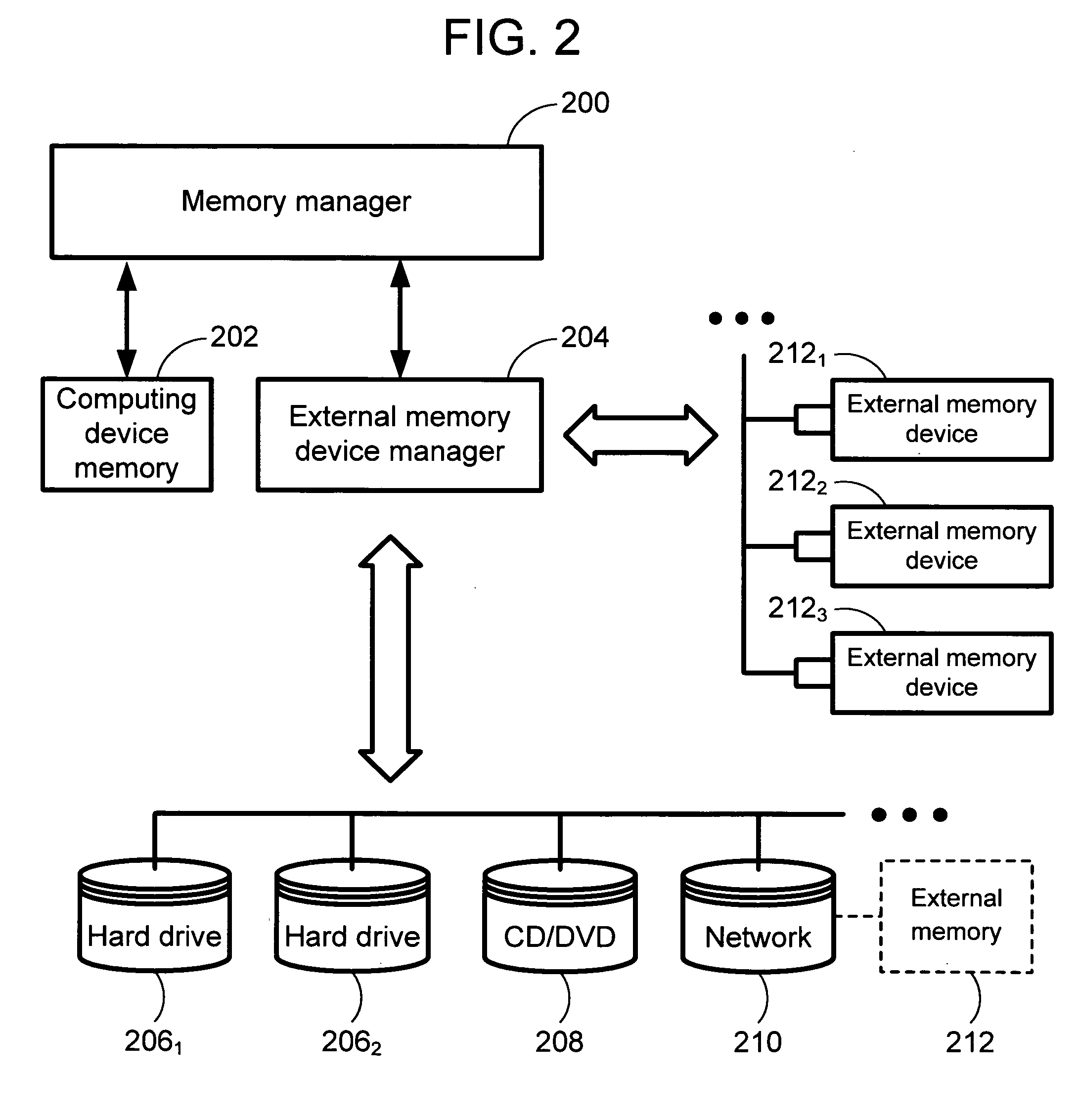Using external memory devices to improve system performance
a technology of external memory and system performance, applied in the field of computer systems, can solve problems such as slow transfer of pages from the hard drive, time-consuming process, and worse problems, and achieve the effects of improving system performance, increasing performance and productivity, and reducing access tim
- Summary
- Abstract
- Description
- Claims
- Application Information
AI Technical Summary
Benefits of technology
Problems solved by technology
Method used
Image
Examples
Embodiment Construction
[0014] The invention is directed towards an improved memory management architecture that provides a system, method, and mechanism that utilizes external memory (volatile or non-volatile) devices to cache sectors from the hard disk (i.e., disk sectors) or from slower memory devices to improve system performance. For example, many classes of portable computing devices have no hard drives or rotating media storage devices, but still implement hierarchical memory architectures. These portable computing devices would benefit greatly from this invention in that it would allow them to execute larger and more complex enterprise applications within the office place. With the advent of 802.1 In, 200-500 Mb wireless connectivity will be available to any wireless device and the use of external memory devices and / or network based memory servers will improve system performance.
[0015] The external memory is used to cache data from devices that are generally slower in terms of accessing data such ...
PUM
 Login to View More
Login to View More Abstract
Description
Claims
Application Information
 Login to View More
Login to View More - R&D
- Intellectual Property
- Life Sciences
- Materials
- Tech Scout
- Unparalleled Data Quality
- Higher Quality Content
- 60% Fewer Hallucinations
Browse by: Latest US Patents, China's latest patents, Technical Efficacy Thesaurus, Application Domain, Technology Topic, Popular Technical Reports.
© 2025 PatSnap. All rights reserved.Legal|Privacy policy|Modern Slavery Act Transparency Statement|Sitemap|About US| Contact US: help@patsnap.com



